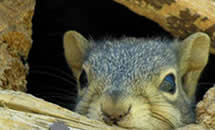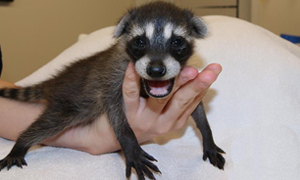Renesting Baby Birds
Great horned owlet in its new nest When baby birds fall out of their nests, it is impossible for their mothers to pick them up and place them back in the nest. Some mothers will continue to feed their babies on the ground, but these babies will eventually fall prey to predators such as raccoons or stray animals. This is where YOU can help! Most birds do not have a good sense of smell, and do not care if you touch their babies. It always best for mom and baby to remain together, and babies may still be cared for by the parents if placed in a substitute nest. A concerned citizen called The Wildlife Center of Texas last week about two great horned owlets whose nest had fallen down, taking the owlets with it. One had already passed away when he found the fallen nest, but the other was still alert and walking around. He called the center to see if he should bring it in, but here at The Wildlife Center of Texas we always want to try and reunite parent and baby if possible. Laundry basket used as substitute nest So we instructed the rescuer on how to construct a make-shift nest out of a laundry basket, leaves, and grass and place it in a tree nearby the spot where the babies were found. Of course it was also important that he watch to see whether the parents came back to care for the baby. The mother soon returned and kept feeding her baby! The concerned citizen sent us regular updates and pictures of the baby and, under the care of its mom, it is growing every day. [...]




